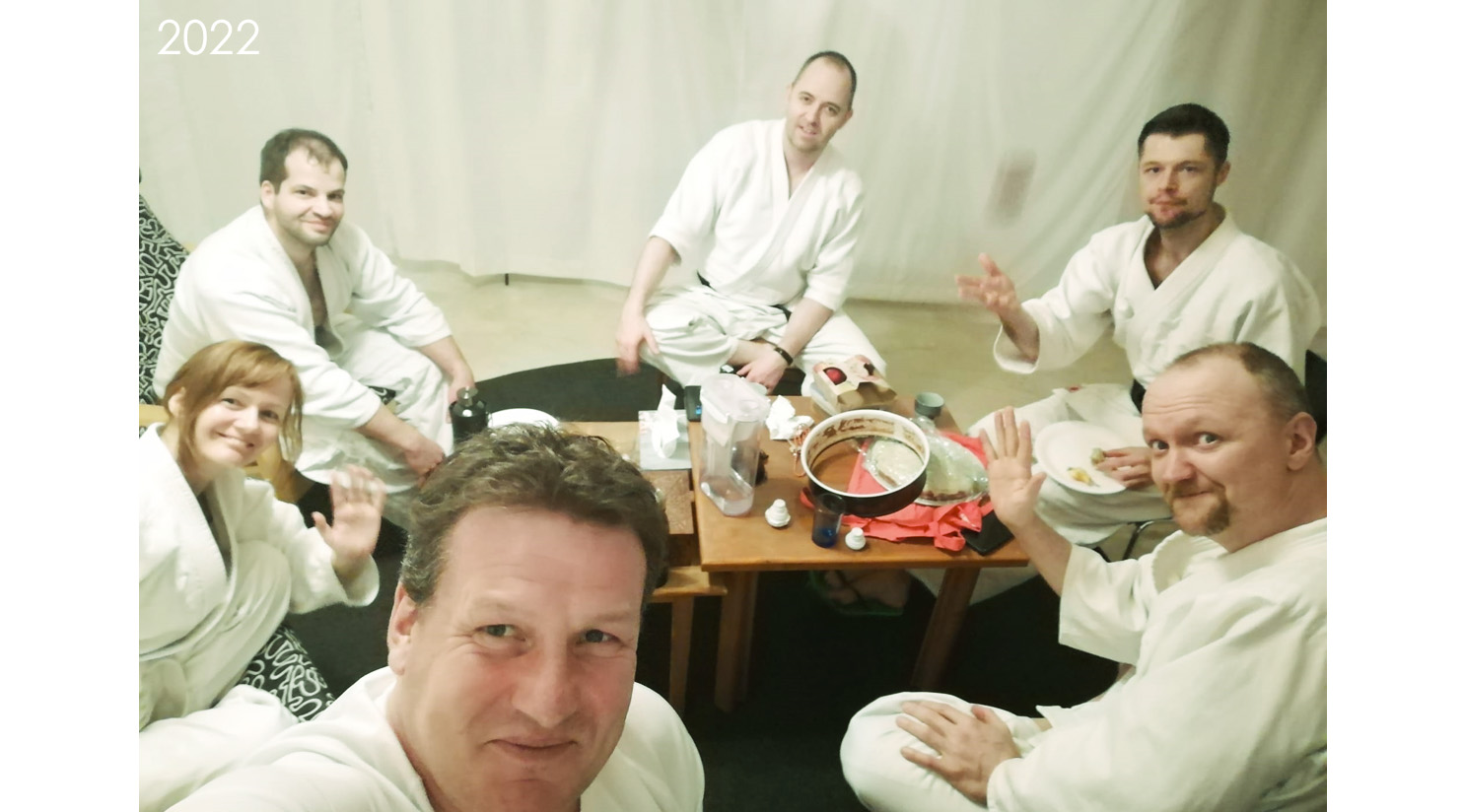
Thanks
go to Zoltan for providing the use of the dojo and Manja for the cakes!
11. - 13.03.2022
On Friday evening a few people from the Vienna dojo met for an evening practice with Michal (Ki Aikido Libuš, Prague). A room without tatami presented the opportunity to practice ki-breathing and meditation. At the end, there was time for drinks and snacks.
Onward journey by car Saturday morning to Budapest and the Katsuyahabi dojo for a weekend training with people from Hungary and also the Netherlands. It was agreed that everyone would prepare for their next exam and some common themes were found: Yokomenuchi (3rd Kyu, Shodan, Sandan) were covered on Saturday along with Jo 1. There was also time to run through a different Jo kata from outside the Ki No Kenkyukai programme demonstrated by Franck – good mental exercise after intense practice with constant changing of partners.
Sunday continued with Jo 1 and 2 with Bokken (Tsuzukiwaza 25 and 26) and Kumitachi (29).
Lunch was taken in a Hungarian style restaurant popular with locals and (young Spanish) tourists which served us well both days.
A small meeting like this one in a small dedicated dojo has many benefits. The needs and interests of the whole group can be considered in the absence of a pure teacher figurehead. Expectations and familiarities dissolve. I am the practice. We are the practice. This is the practice. Past experience and accomplishment afford structures and themes. Practice (mental and physical) beget questions and logic. Uke and Nage change and lead mind.
Each moment is opportune for discovery. “Each person must create their own life” (Doshu Yoshigasaki)
Materials can be passed on or down from one person to another. How about ideas and concepts?
“Everyone must discover the moon” (Doshu Yoshigasaki).
An example: Paper is a material and mass produced paper is made by machine to be homogenous; each piece virtually identical to the next according to a particular design. How about artisanal, handmade paper? Each page is unique, co-created by nature and the paper maker. Then there is the form. Size, texture, thickness, colour, even smell – which quality and impression should the paper convey? What should a diploma look like? Who is going to make it and what qualities reflect an acceptable or good standard?
Should a certificate representing three months’ work be the same as that of 3 or 30 years, even if it is hidden away on a shelf in the home thereafter? Instructors who issue diploma and teachers now have had one year at least to consider this type of question.
What about Aikido as a whole, and art generally, can it be passed on or handed down? Or do we have the responsibility to reimagine and create it ourselves?
一 期 一 会 (いちご・いちえ)
Ryan, Vienna

go to Zoltan for providing the use of the dojo and Manja for the cakes!